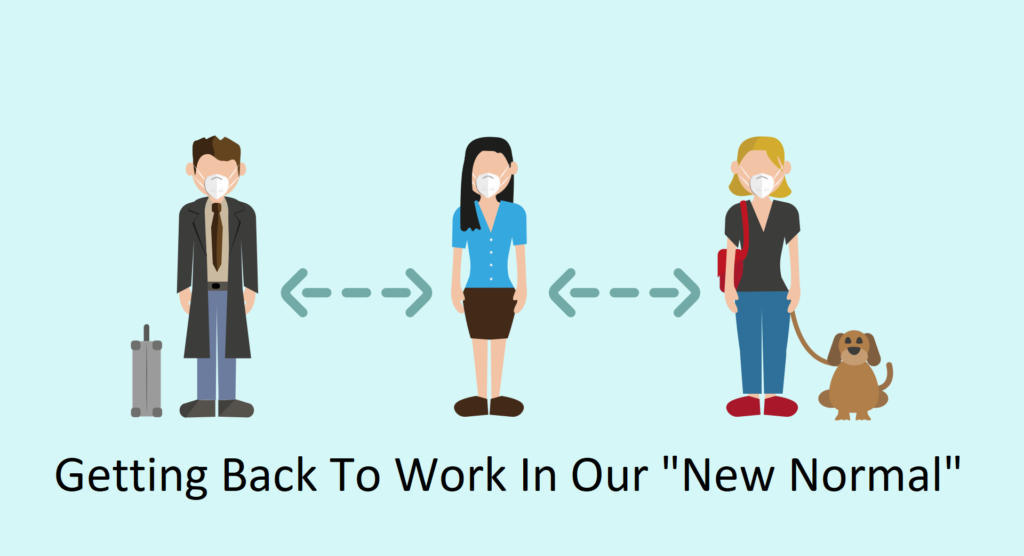How can we prepare to have our teams return to work now that COVID-19 restrictions are being eased in many communities? We have been working closely with our client companies to help smoothly ramp-up staff who are returning to work after a long absence due to pandemic-related shutdowns or slowdowns. Here are some of the key points we’ve uncovered:
Summer Heat Warning: General Labourers May Need Some TLC As They Ramp Up Again
We’re all glad to be starting the journey towards full re-opening of our workplaces. As it happens, we’ve seen some consistently hot weather in many regions, which creates challenges for maintaining safe working environments every summer, but needs special attention when our general labour workforce are starting back at work at one of the hottest times of year.
People who have been off work for a few months due to COVID-19 related job losses or work slowdowns, may not be at the same physical fitness and endurance levels after a few months of inactivity. Take special care to encourage really good stretching regimes at start and end of shifts to help ward off muscle strains and soft-tissue injuries. More evenly spaced rest breaks may be needed as everyone re-acclimates to physically exerting work, and definitely making sure water stations are readily accessible. It may also be a good idea to do daily tool-box talks on safe lifting, as well as the increased sanitizing procedures for material handling equipment.
Physical Distancing Requires Creative Thinking
To support your efforts to create responsible physical distancing spaces around workers, a few techniques have been embraced by our client companies. These include:
- adding shifts so staff levels can be staggered more easily
- staggering break times so lunchrooms can be properly sanitized between groups
- adding outdoor break areas to reduce exposure risk in confined lunchroom areas
- grouping team members so that they only work within their “cohort”, thus limiting their risk of exposure or spreading the virus. This will be invaluable should contact tracing be required in the event of someone receiving a positive COVID-19 diagnosis.
- encouraging anyone with the ability to work from home to do so, in full or in part. This was particularly successful with call-centre and customer-service staffing projects we worked on, but it doesn’t end there. In fact, ABL coached an assembly company to test run a work-from-home project, where a group of long-time assembly employees were sent home with a one week supply of components to be assembled at home. This helped the company meet its quotas during the slowdown, while still meeting physical distancing guidelines. You can reach out to ABL’s Business Manager, Jeff Aran, to learn more about how that worked.
Recovered Covid-19 patients may need some considerations as they return to work
A lot has been written about the physical impacts to COVID-19 patients. What is not receiving as much coverage, however, is the lingering physical ailments that recovered patients must deal with for weeks or months after receiving the “all clear” diagnosis. It is not uncommon for recovered COVID-19 patients to deal with prolonged issues around
- Shortness of breath
- Fatigue
- Anxiety
- Muscle aches
- Liver and digestion issues
If you have an employee re-entering the workforce after recovering from COVID-19, take special care to do regular check-ins with them to make sure they are coping well, and keep our other points listed above top of mind to make it a safe and supportive re-start for these more vulnerable employees.
Childcare Issues And Other Vulnerable Family Members Could Complicate The Return Of Some Workers
Summer camps and summer school programs have been cancelled or severely limited because of city and provincial COVID-19 restrictions. Parents who thought they would have access to these programs are finding it difficult to find childcare for while they are at work. The fall school semester looks to be similarly challenging which many school boards considering a part-time in-class schedule.
Consider allowing some flexibility for start or end times to make it easier for workers with young children to return to work, or consider setting up a company day-care program that can help make it easier for loyal workers to return to work without worrying about childcare issues.
Addressing General Fears Of Returning To Work
Let’s address the elephant in the room: many staff members may be stressed out about the idea of returning to work. They need to be reassured that their workplaces are doing everything possible to create a safe work environment that limits exposure to risk of infection. Make sure to do a thorough job of educating and informing your teams of all measures that have been put into place, as well as the part they as individuals and teams will play in helping to keep one another safe. You may need to do this kind of information roll-out a few times, and in a few different ways, since people may not absorb all the information the first time. This is a great reason for utilizing tool-box talks, as you can set aside a segment of the talk to address or review any COVID-19 related info in small group settings, which make it easier to read the reactions and engagement level of team members.










